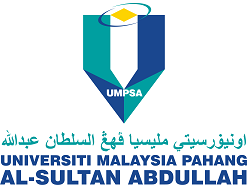Exploration of Secondary Deposit to Determine Manganese Ore Body
Exploration of Secondary Deposit Ore Body
DOI:
https://doi.org/10.15282/ijets.10.1.2023.1004Keywords:
Manganese Ore, Ore Body, X‐ray fluorescence spectrometry (XRF)Abstract
Manganese ore is one of the most critical mineral commodities and irreplaceable in steelmaking. With the high demand for manganese ore, exploration to find manganese ore deposits is essential before large investments in mine development. The purpose of this study is to determine the content of secondary manganese through exploration in Ladang Sungai Terah Gua Musang with an area of 40.5 hectares. The area is located near the Permian -dominated zone which can be observed during plutonic igneous granites in the southwest and in the presence of phyllite, slate and shale with subordinate sandstone and schist. The significant secondary mineral found is manganese oxide or pyrolusite. The exploration method is by excavating the trial pit (TP) and bore hole (BH) drilling. The location of TP and BH are determined from anomalies data and outcrop and boulders presence at site. Results that obtained from the thirteen TP sampling showed that the deepest TPs are excavated at 4.0 meter depth and the shallowest depth was at 3.6 meter depth. The thickest manganese ore was at 0.4 meter for TP 06. The highest-grade manganese was 54.3% at 3.8 meter depth of TP 01 located at north-west from BH1. The BH soil which obtained at 12.0 meter depth with silt clay and the presence of sand gravel. The BH soil was taken and homogenised prior testing in order to get representative result. The XRF analysis shown that the manganese ore was found at 55.90 % and second highest mineral was silica oxide which was 21.74 % followed by aluminium at 14.32 %. The calculation of manganese ore reserves was estimated at 157,545 tonnes of which the lifespan of manganese mining operations was estimated at only 10.375 months. Even the quality was high but it still not reaching the ore body It can be concluded that this area is not economical for commercial production of manganese ore and by pursuing this area will surely contribute to business risks, negatively impacting on potential profitability. Mining revenue calculated from estimated ore reserved in this area is not expected to cover costs such as the exploration working capital, property acquisition costs, mine development costs including development drilling and infrastructure development such as roads, utilities, plant and equipment costs which include mining equipment, mill and processing equipment and building, structure and many more.
Downloads
Published
Issue
Section
License
Copyright (c) 2023 University Malaysia Pahang Publishing

This work is licensed under a Creative Commons Attribution 4.0 International License.


